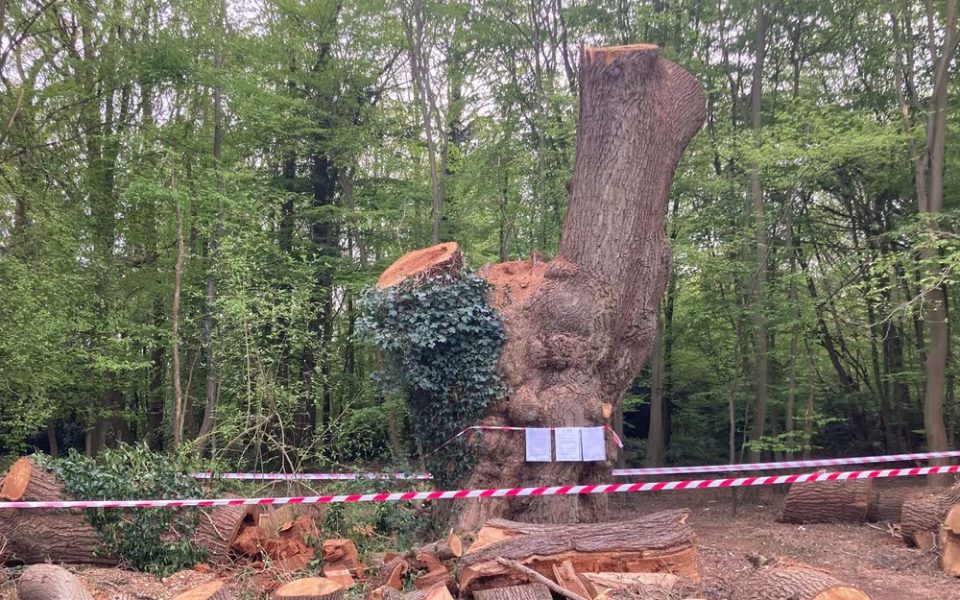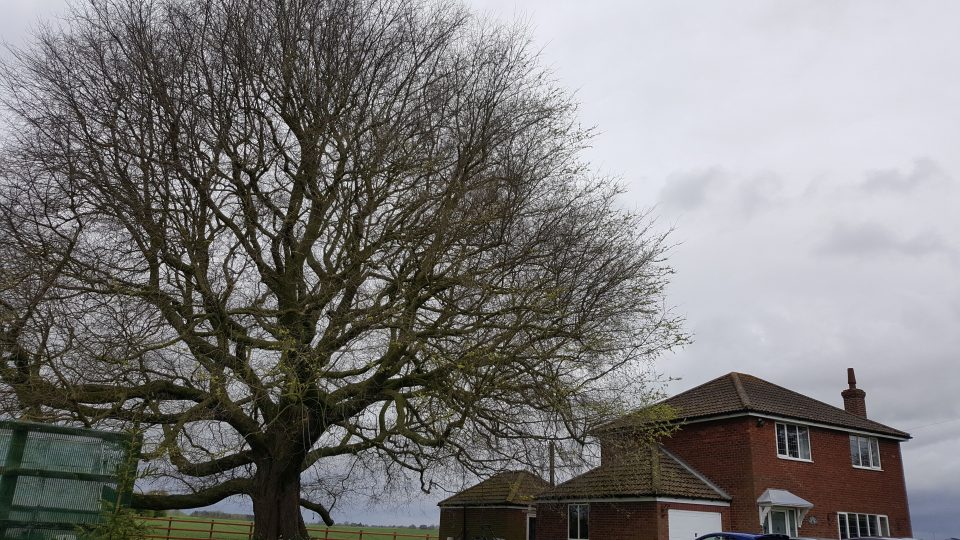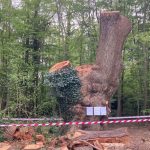
Reflections on the Enfield Oak and the State of Ancient Tree Protection
6th May 2025A Day with the Ancient Tree Forum – Calke Abbey, Derbyshire
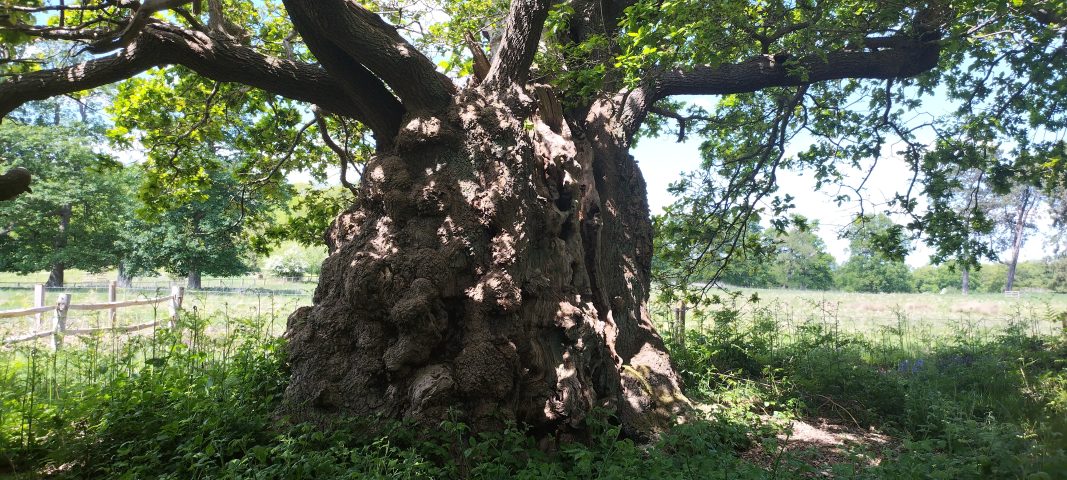
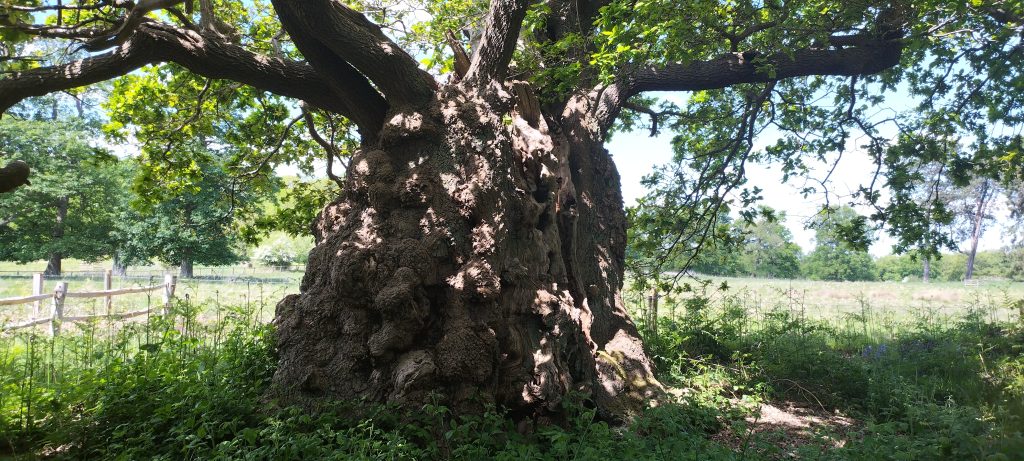
Calke is no ordinary park. Its ancient deer park is designated a Site of Special Scientific Interest and a national nature reserve. It’s one of the finest surviving examples of wood pasture habitat in England, especially valued for its deadwood invertebrate fauna: saproxylic beetles and other species that thrive in the hollows and decay of very old trees. This was the place for the West Midlands Ancient Tree Forum first field visit of 2025.
After introductions (generally a mix of tree consultants, tree officers, rangers, ecologists, and estate managers) in the National Trust car park, we began with a gentle walk across the ancient parkland, past a unique cloned sycamore and a prominent great oak near the main house and car park. Its location means the land is still occasionally used as overflow parking. Thankfully, the crown is now fenced off, and on peak days the fencing is temporarily extended, but the underlying tension remains, between accommodating visitors and protecting the crucial soil around the roots.
The house itself is managed according to a philosophy of deliberate decline, with many rooms left untouched since the property was handed to the Trust. That sensibility extends into the wider landscape. As a result, the trees here have been spared the worst excesses of modern estate management: no obsessive deadwood tidying, no unnecessary felling and pruning by trigger-happy tree surgeons or risk-averse managers. And yet, this lack of intervention is not without cost. Several veteran trees have catastrophically failed in recent years. Some of these losses might have been avoided with sympathetic pruning. But, as with many tree failures, it’s easy to know what should have been done in hindsight.
We ambled on, stopping to admire trees dead since the 1970s, yet still supporting life: hosting long-term bat roosts among others. There was discussion around managing visitor pressure, deer, bracken, and squirrels – the latter a particularly resource-heavy task that often feels like a losing battle.
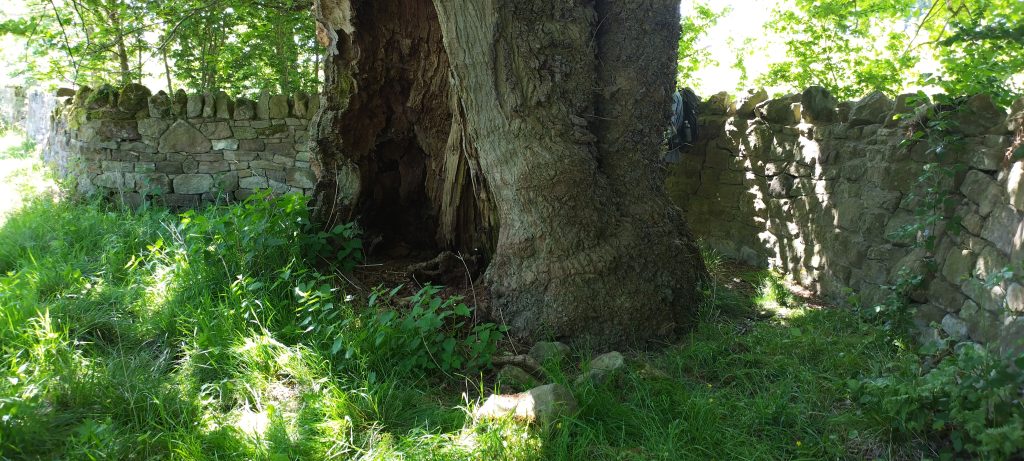
We were led to a gnarled oak, tucked away by a bend in a dry-stone wall, its centre full of burrs and decay. Most of us had driven past it that morning without noticing it. A reminder that for many of these trees, remaining inconspicuous may be part of what allows them to grow old in the first place.
At times the group split into smaller clusters, drawn to the abundance of remarkable trees and features. But we all stopped for lunch along the old lime avenue, using the trunk of a recently felled tree—a victim of managing Kretzschmaria—as a bench.
A low-hanging limb on an ancient oak had clearly become a much-loved climbing frame for children. It raised thoughtful questions: Is the risk of ground compaction a fair price for kindling a child’s lifelong connection to nature? Do barriers protect these living monuments, or do they disconnect us? What are the wider implications of that growing disconnection?
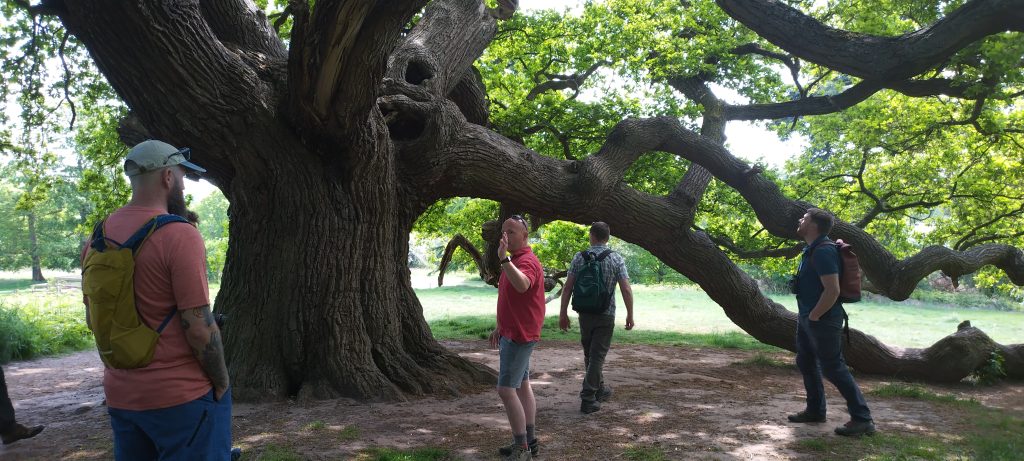
The trees became stranger as we continued. We huddled around a near-hollow lime, still supporting a contorted full crown as if by magic. And then we reached the famous Old Man of Calke, a tree more baobab than oak in form, squat and solid, with a presence that felt geological rather than botanical.
Finally, we came across what could only be described as “walking trees”: veteran limes and beeches that had layered and spread, creating new stems and roots, in a gesture toward immortality. Is the new tree still the same tree? When does one tree become another? Perhaps only when no one is watching!
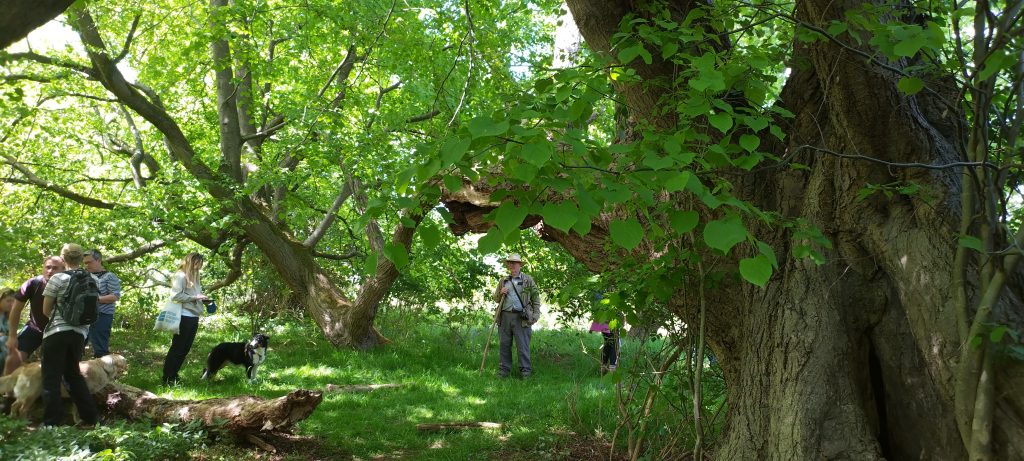
Even after everything we saw, it felt like we’d only scratched the surface of what Calke has to offer. It was a relaxed, informal day, gently guided by James Butler White, Callum Throw and the ATF team, supported by the expertise of Jon Lewney from the National Trust, and held together by a shared sense of awe for these remarkable trees.


